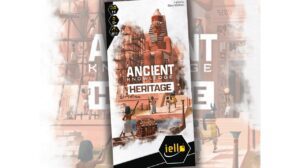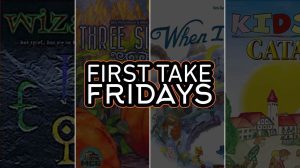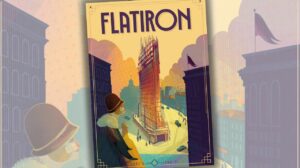Disclosure: Meeple Mountain received a free copy of this product in exchange for an honest, unbiased review. This review is not intended to be an endorsement.
“Daddy, you KNOW I’m always down to play more Disney Lorcana.”
This was the introduction from my 10-year-old when the newest Lorcana decks from our partners at Ravensburger, Into the Inklands, arrived at my home a few weeks ago. My kids are massive Pokémon fans, so anything with the words “trading card game” splashed on the cover is going to work.
Just like the cards in the inaugural set (The First Chapter), the two newest starter decks are playable as a card game but are just as delightful to look at for the amazing artwork. Disney Lorcana: Into the Inklands clearly has a story and a path for players looking to explore the lore beyond the table, but for me, Lorcana is still just a game.
That’s the difference, really, isn’t it? I want to shuffle the deck, deal seven cards and start the game. But because this is a family activity for me and not a competitive weekend at my local game store with other players, Lorcana has taken on a different meaning. Into the Inklands continues the fulfilling gameplay loop of the franchise as lead designers Ryan Miller and Steve Warner continue pumping out new cards with the help of the stellar collection of artists at Disney’s disposal.
It’s amazing how deep the Disney (ink)well goes with some of these characters. When I opened my Into the Inklands packs and found one of the characters of my youth staring back at me, all I could do was scream…

SCROOGE McDUCK!!!
Disney Lorcana: Into the Inklands is the third in the ongoing Disney Lorcana Trading Card Game series released by Disney and Ravensburger in 2023, with new sets coming so fast that I know I won’t be able to keep up with them. The second set, Rise of the Floodborn, arrived a few months ago.
The gameplay loop has not changed, at least structurally. Players need to have a deck of at least 60 cards, some cards will be used as Ink to power the spending engine to get new cards into play, and characters can either go on Quests or “challenge” (fight) other exerted characters in an opponent’s play area.
The newest card types that differ from the ones I used in The First Chapter are Location cards. The main hook with Location cards is a passive Lore (points) income, with abilities that come in available for use immediately, versus some of the other Lorcana card types that come in “Ready” but unavailable until a newly-played card’s next round. The main difference I noticed in our plays was that having a Location card in a player’s initial hand meant points were coming a little faster than normal, meaning shorter games (the score threshold is still 20 Lore).
I like this variability. While it is a totally different game, the supercharger that the Terraforming Mars expansion Prelude offers gets that game up and running faster, without a hit to the gameplay. Locations in Into the Inklands can turn a 20-minute Lorcana game into a 15-minute game with the same amount of tension that comes from trying to find the balance between sending characters on Quests versus trying to slow opponents down by using Challenges to take out rival Dalmatians.
That’s right—it’s fun to take out the dogs! The other addition that my 10-year-old and I are most excited about are the new characters in the Into the Inklands starter decks. The new additions include the DuckTales and Moana starter deck (Ruby and Sapphire), as well as the Peter Pan and 101 Dalmatians deck (Amber and Emerald).
While I think Pluto is a little too beefy in the Amber and Emerald deck, with a Bodyguard power that means I seem to always be facing him late in games, the general balance of the cards was fine. I really like that some of the character cards in the Ruby/Sapphire deck cannot be used on Quests…they only exist to fight, and it doesn’t allow players to think through whether they should slow an opponent’s scoring engine down or not. (Of course, I have already lost a game where I just needed to have a character that could Quest to win by scoring one Lore, but instead only had characters in play who could not Quest at all. C’est la vie!)

The Same, With More
My opinion of Disney Lorcana has not changed: I’m still a fan. As a father looking for ways to connect with my children playing games, this is fast, easy to teach, and features personal connections that everyone in my household enjoys. The (ink)well of Disney characters, the canon—my goodness, it’s so massive. I mean, I watched a ton of DuckTales as a kid and loved that show, so it’s a delight to toss Scrooge McDuck out during a game to take even a single action before Scrooge gets banished out of my play area.
The best thing about Lorcana is the decision point: when to flip from stalling out an opponent’s engine to flipping on my own Quest scoring engine, to score four or five points in a round and hopefully outrace the person across the table to cross the 20-point finish line. Games are always close, and the luck of the draw combined with these lighter strategic elements are enjoyable.
My main negatives with Lorcana haven’t changed, either. It still feels like the card draw is too tight. You only draw one card per turn, and many of the decks I’ve tried across The First Chapter and Into the Inklands do not have the ability to get more cards fast enough. Because cards must occasionally be buried in the Inkwell as a resource, it always feels like I’m down to just a card or two late in games. I was a little surprised that the majority of the Into the Inklands cards don’t have a way to generate a better card draw.

If Location cards don’t come out early, the same slow starts to each game arise again and again. I like Lorcana as a 15-to-20-minute thriller, particularly because you aren’t getting those four-cost cards out for a few rounds. Challenging/fighting opponents early on doesn’t make for satisfying play either, slowing everyone out of the gates without a meaningful yield to fun gameplay elements. (“Ha ha! I took out your lowly basic character with my meaningless one-attack-power character, so…now we basically have to start again from scratch with no points each.”)
I am sure Disney and Ravensburger are in the lab every day working to make Lorcana something special, and it’s going to take a half-dozen sets or more to really find the sweet spot. Then, they’ll find that spot, and have sets featuring Star Wars characters or Pixar characters plus a really robust series of counters for every meta that gets popular by the one-year mark of release (Lorcana arrived in August 2023.)
Lorcana is a toddler, rounding the curve on its tricycle. But that kid is healthy and has a bright future. Into the Inklands continues to build on earlier decks and with worldwide competitions kicking off in earnest this spring—one of the stops is Lille, France!!—the designers are about to get a lot of feedback from competitive players on what strategies need balancing as future sets hit retail.
I’m hoping the massive amount of competition in this space will drive further innovation. (Speaking of Star Wars—Star Wars: Unlimited is taking the TCG/CCG world by storm just like Lorcana did…when will we reach the saturation point??) I’m excited to see what’s coming next from each of the major TCG franchises fighting for market share, because we, the players, are all going to be winners.













Add Comment